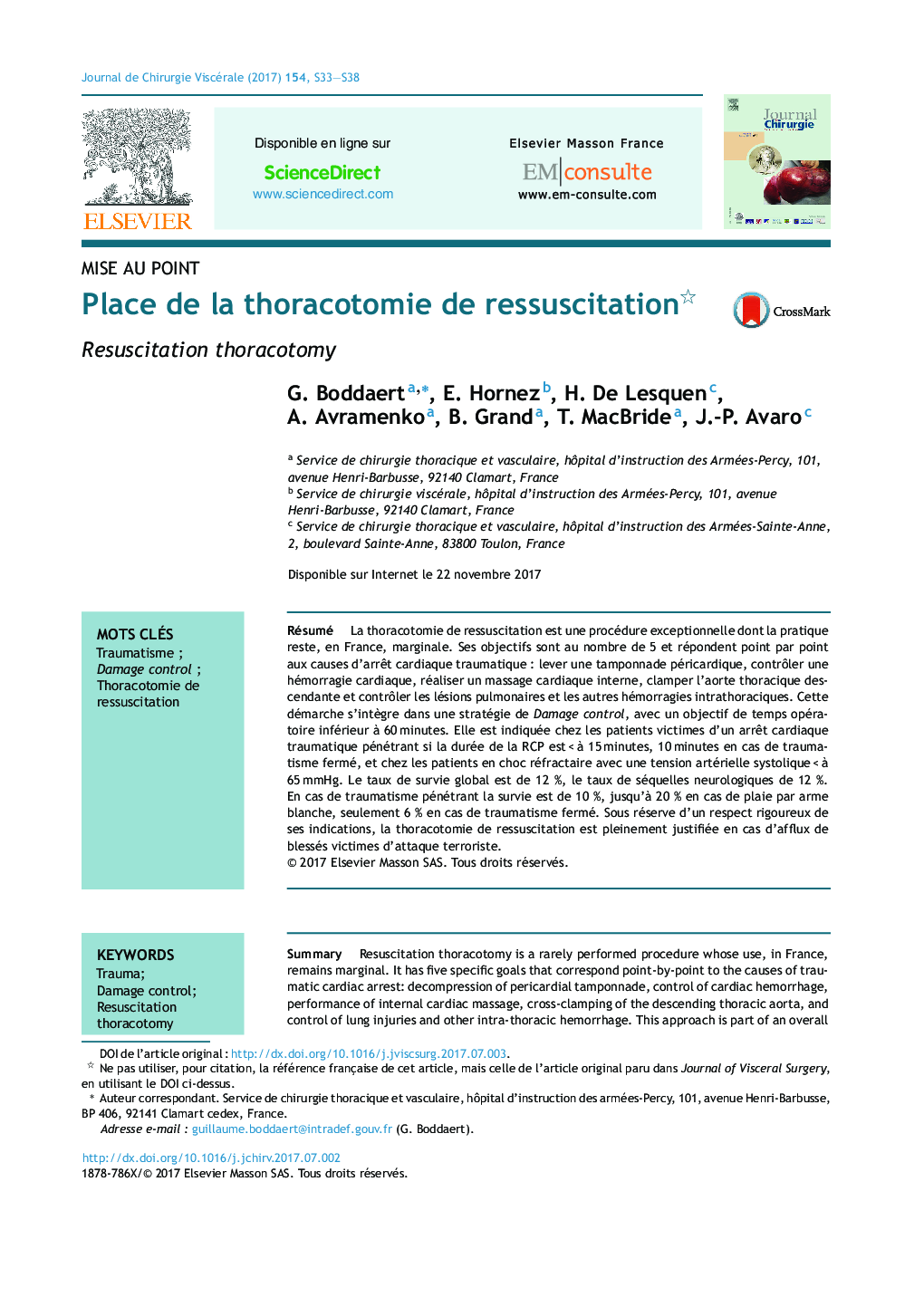| Article ID | Journal | Published Year | Pages | File Type |
|---|---|---|---|---|
| 8728860 | Journal de Chirurgie Viscérale | 2017 | 6 Pages |
Abstract
Resuscitation thoracotomy is a rarely performed procedure whose use, in France, remains marginal. It has five specific goals that correspond point-by-point to the causes of traumatic cardiac arrest: decompression of pericardial tamponnade, control of cardiac hemorrhage, performance of internal cardiac massage, cross-clamping of the descending thoracic aorta, and control of lung injuries and other intra-thoracic hemorrhage. This approach is part of an overall Damage control strategy, with a targeted operating time of less than 60Â minutes. It is indicated for patients with cardiac arrest after penetrating thoracic trauma if the duration of cardio-pulmonary resuscitation (CPR) is <Â 15Â minutes, or <Â 10Â minutes in case of closed trauma, and for patients with refractory shock with systolic blood pressure <Â 65Â mmHg. The overall survival rate is 12Â % with a 12Â % incidence of neurological sequelae. Survival in case of penetrating trauma is 10Â %, but as high as 20Â % in case of stab wounds, and only 6Â % in case of closed trauma. As long as the above-mentioned indications are observed, resuscitation thoracotomy is fully justified in the event of an afflux of injured victims of terrorist attacks.
Keywords
Related Topics
Health Sciences
Medicine and Dentistry
Gastroenterology
Authors
G. Boddaert, E. Hornez, H. De Lesquen, A. Avramenko, B. Grand, T. MacBride, J.-P. Avaro,
